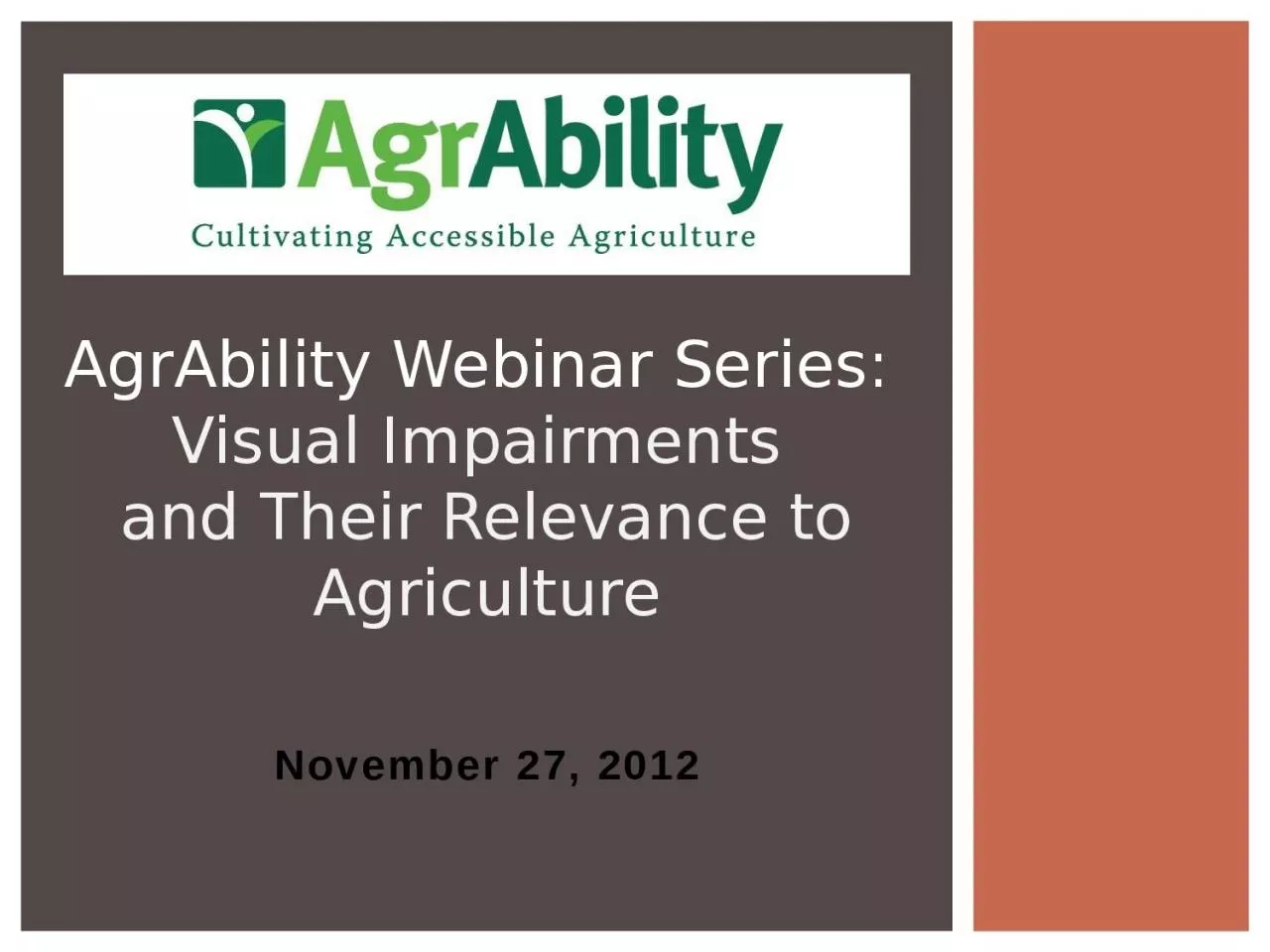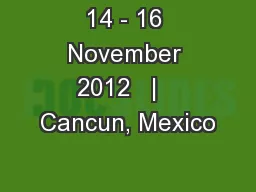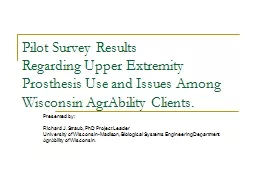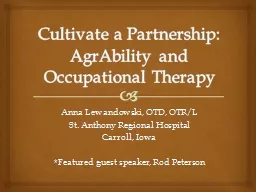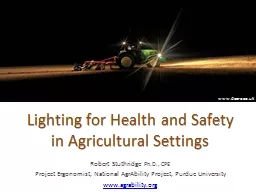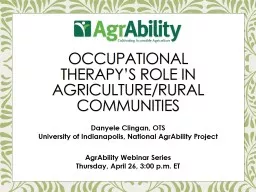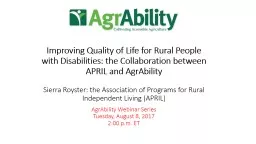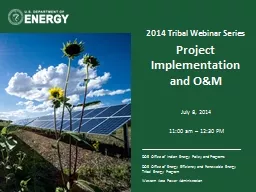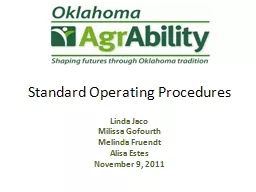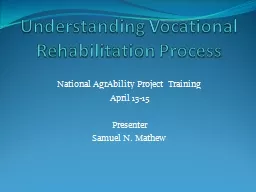PPT-November 27, 2012 AgrAbility Webinar Series:
Author : Extremejock | Published Date : 2022-07-27
Visual Impairments and Their Relevance to Agriculture Need speakers or headphones to hear the presentation Meeting gt Manage My Settings gt My Connection Speed
Presentation Embed Code
Download Presentation
Download Presentation The PPT/PDF document "November 27, 2012 AgrAbility Webinar Ser..." is the property of its rightful owner. Permission is granted to download and print the materials on this website for personal, non-commercial use only, and to display it on your personal computer provided you do not modify the materials and that you retain all copyright notices contained in the materials. By downloading content from our website, you accept the terms of this agreement.
November 27, 2012 AgrAbility Webinar Series:: Transcript
Download Rules Of Document
"November 27, 2012 AgrAbility Webinar Series:"The content belongs to its owner. You may download and print it for personal use, without modification, and keep all copyright notices. By downloading, you agree to these terms.
Related Documents

